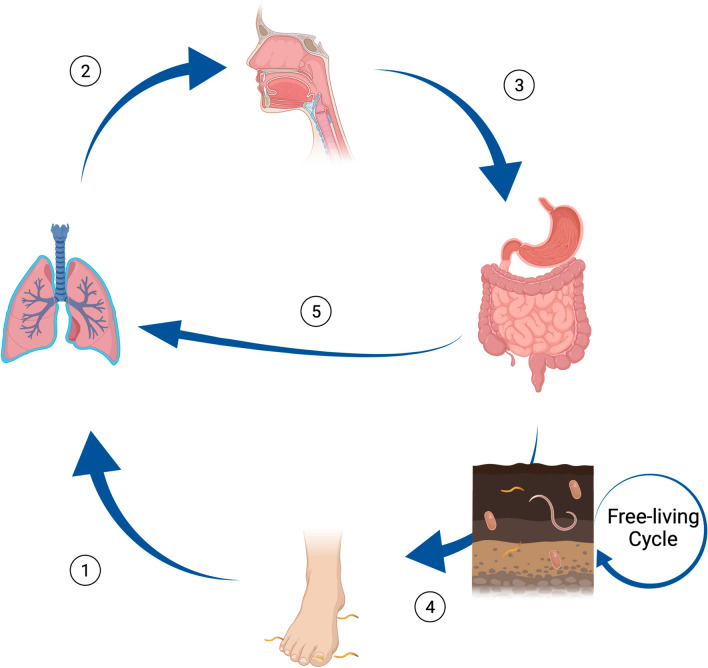Fig. 1.
Lifecycle of S. stercoralis. (1) Filariform larvae penetrate the host’s skin and migrate to pulmonary parenchyma. (2) Filariform larvae are coughed up and swallowed. (3) Filariform larvae migrate to small intestine and lay eggs, which hatch into rhabditiform larvae. (4) Rhabditiform larvae are excreted in soil and give rise to infectious filariform larvae, which are able to penetrate skin and restart the cycle. S. stercoralis also has a free-living life cycle, independent of human hosts. (5) Rhabditiform larvae may give rise to infectious filariform larvae in the host itself, leading to invasion of intestinal mucosa and/or perianal skin, process known as autoinfection. In the right host, this may lead to hyperinfection syndrome. Figure created with Biorender

